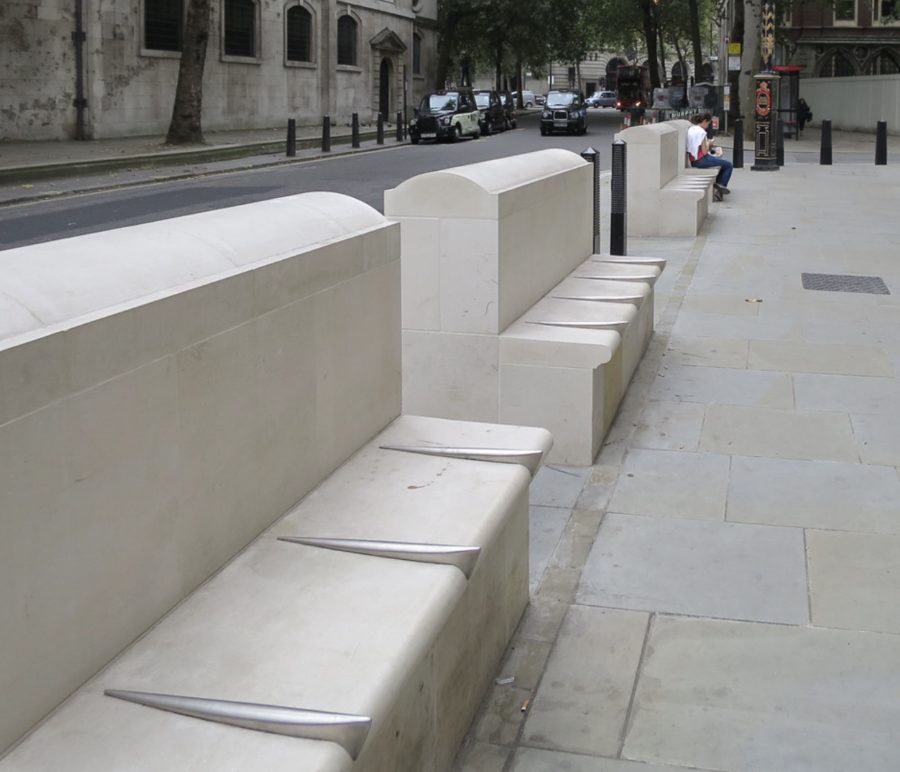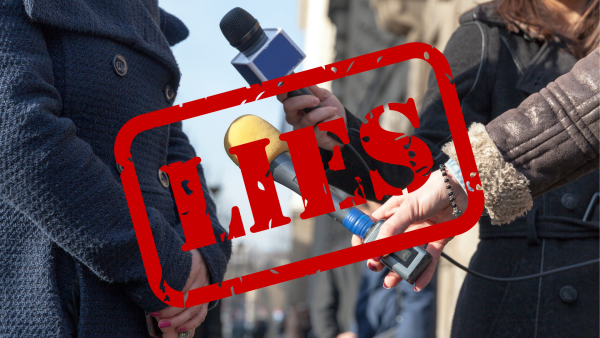The Dehumanization of Homeless People
Hostile architecture is a common way to stop homeless people from sleeping in public places
According to the U.S. Census Bureau, the official poverty rate in America is 11.6% with a whopping 37.9 million people living below the poverty line. The HUD (the Department of Housing and Development) calculated that as of Dec. 2022, 582,462 people were experiencing homelessness. This has risen by 2,000 people since Dec. of 2020 and is on a steady 0.18% rise. This doesn’t seem like a lot compared to the 331.9 million people living in America right now, but shouldn’t homelessness be on a steady decline instead?
Before we get into the meat of this article, I want to put out a disclaimer that homeless people aren’t stray animals, nor are they criminals or bad people. The government spoon-feeds us information to make people without homes seem like they’re ruining our community when in reality, they’re just people who are struggling. The “homeless” descriptor is also only often used to further dehumanize these people who are struggling.
From a young age we’re taught to be careful of strangers and to think of everyone as evil, to put up this blast wall around us for protection. Although this is helpful for small children (don’t talk to strangers, stay with a trusted adult when you’re in public, etc) a grown person doesn’t need to be skirting around a man panhandling on the street corner. He is a person too.
This is the first step of combating homelessness: getting rid of the prejudice and propaganda against these people.
Our next step is doing what we can individually. Some of the residents in our community are just doing what they can as one person. Generous people supply those panhandling with a few extra dollars or even some left over food. Influencers post about making 100 sandwiches and passing them out to the people in our community. We have a food pantry that not only provides nutritious food to those who need it, but also basic hygiene and cleaning products. There are even organizations in which a person can go in, sign up, work for the day, and walk home with the money they earned that day. All of these are individual things to help combat homelessness, but none of them are long-term solutions.
Although giving someone a little bit of cash will help them in the moment, it’s not a sustainable amount of money. The sandwiches influencers hand out are a great start, but they only give one person one meal. Food pantries are usually only able to supply food or hygiene products once a month per person/family. Organizations to help the homeless get back to work can’t cater to people who require childcare or are unable to work for whatever reason. These things have helped people in the past, but homelessness is still on the rise and we need a solid long-term solution.
Let’s look at what the government does about it then. Short answer: almost nothing. Shelters are built, food pantries are organized, but we already determined that those are short-term things. The people in charge of our country are standing by while the average home buyer paid 77% more on their loan than they did the previous year, while people who don’t have houses are dying in the streets from starvation and disease.
The government must care about the citizens of this country a little bit though, as everyone remembers the stimulus checks that were sent out during COVID. This has a very simple reasoning behind it: people couldn’t work so they weren’t making any money. No money means no spending, and no spending means no circulation of the economy. Spending money on rehabilitation centers for the troubled and homeless doesn’t stimulate the economy. Specifically, our government here in the U.S. tends to ignore these people that are suffering simply because they do not care.
One thing they do spend money on, however, is hostile architecture. Cases include cities putting an extra armrest in the middle of a bench or sharp stones under bridges. Even “modern” weirdly shaped benches are partly there to stop people from sleeping there. The goal is to make it as uncomfortable as possible so as to drive the homeless away from public spaces even though they have nowhere else to go. Cities and governments already refuse to provide them more shelters and resources, so what are they supposed to do?
In fact, homelessness is only really politicized because politicians are rich. The well-being of 1 in 10 Americans is determined by the old white men in power, wondering if they should spend their money helping the unfortunate or flying their private jet to their beach vacation home.
Going a step further, capitalism is one of the main causes for homelessness. The economic system as a whole forcibly keeps down those who were born into poverty or in some way or another ended up there. As a government and a community, we generally fail to lift up those who are caught in a constant loop of failing to get back up in this current system. The thinking behind capitalism is entrepreneurship and to work with what you have. The discrepancy here is that homeless people don’t have the resources to help themselves. It’s difficult to pull yourself up by your bootstraps when you don’t even have any shoes. Entrepreneurship is hard in the society we have today too, as oligopolistic markets dominate the main demands of the people.
So, what are YOU supposed to do? Basically, what you can. Your first step is to stop thinking of homeless people like animals because they’re people too. Those with unfortunate circumstances don’t always have complete control over things and just because they don’t have a place to sleep doesn’t mean you should treat them badly. Then, giving a few dollars to the man in a wheelchair on that street corner asking for food or money won’t kill you. Making sandwiches to pass out is an even better idea. Giving back to your community in a simple and easy way is a great start. Emailing your senators and demanding action will be your next step. Get them to start removing hostile architecture and allocate more resources for those in need. Be the change.
Your donation will support the student journalists of Fargo North High School. Your contribution will allow us to resume physical printing of our newspaper for students at Fargo North!
I'm the editor-in-chief for The Scroll this year. Journalism is one of my few passions and what I'll be doing after high school at MSUM. I'm also involved...





